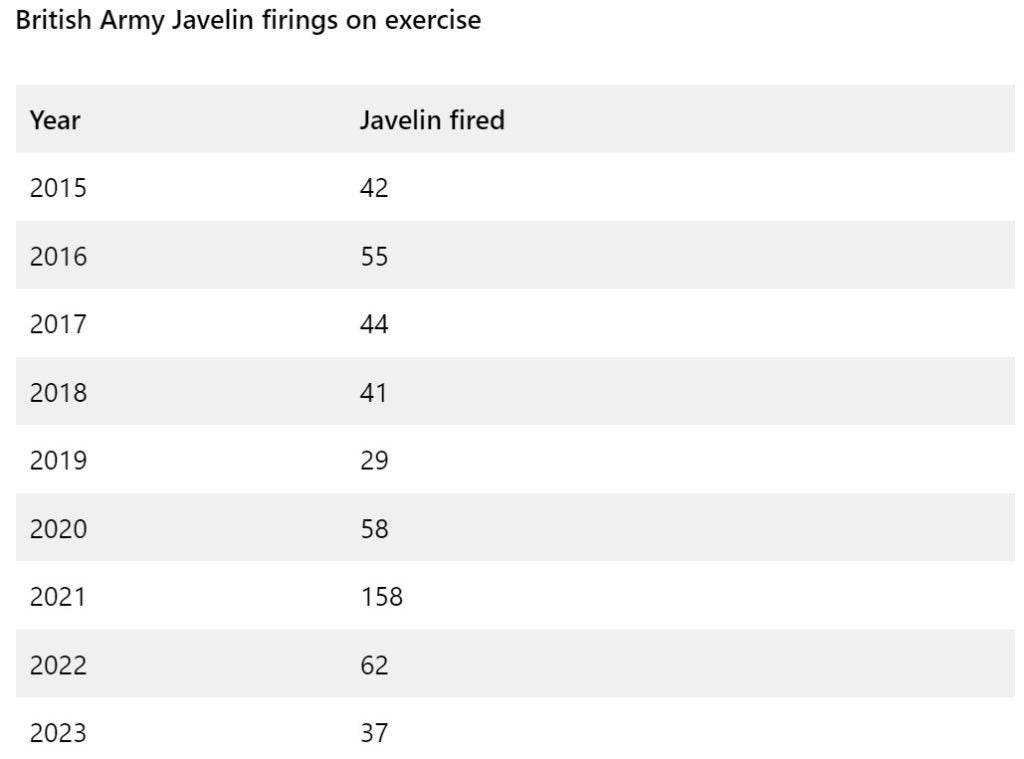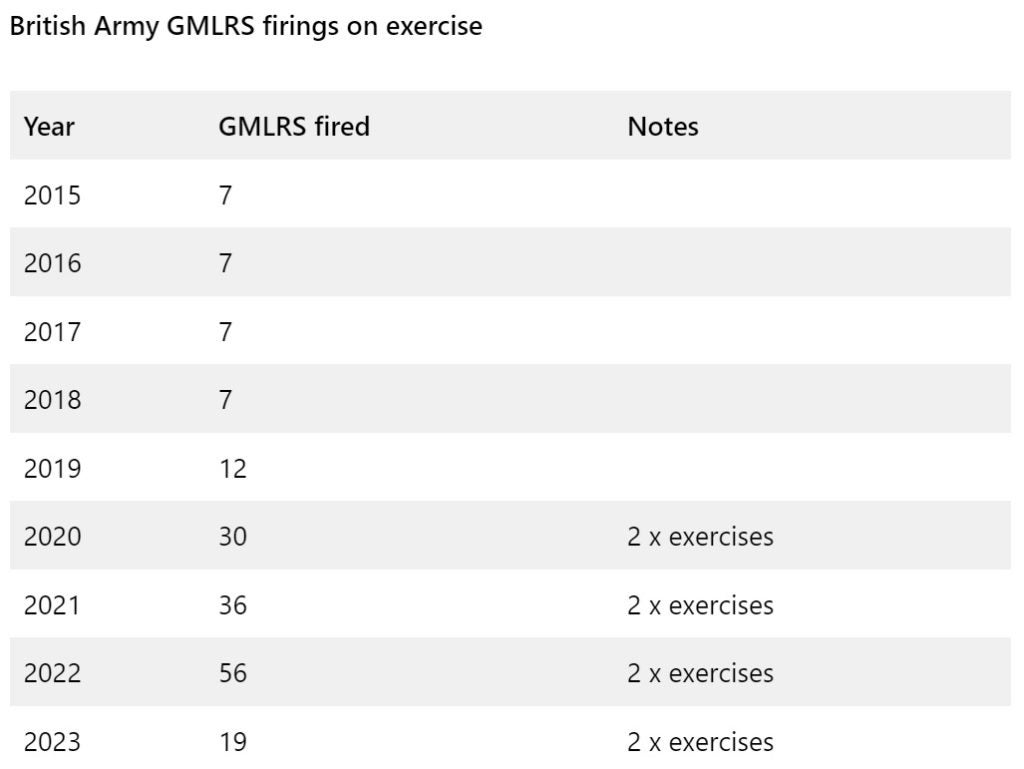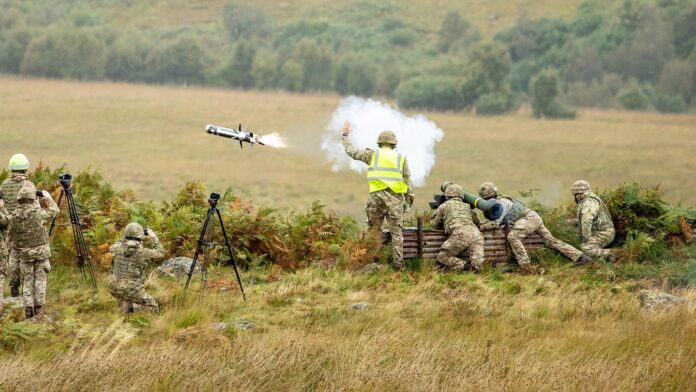The number of Javelin anti-armour missiles and Guided Multiple Launch Guided Rockets (GMLRS) munitions fired by the British Army during exercises dropped significantly in 2023 compared with the previous year, according to newly published figures.
Detailed in two separate UK parliamentary written responses on 20 December, it was revealed that up to 15 December 2023, 37 Javelin missiles and 19 GMLRS munitions were fired during exercises in 2023, down from 62 and 56 instances respectively throughout the whole of 2022.
The firing of Javelin missiles during exercises peaked in 2021 when 158 munitions were expended. The exact causes for the reduction in firings was not disclosed in the parliamentary written responses.

Access the most comprehensive Company Profiles
on the market, powered by GlobalData. Save hours of research. Gain competitive edge.

Company Profile – free
sample
Your download email will arrive shortly
We are confident about the
unique
quality of our Company Profiles. However, we want you to make the most
beneficial
decision for your business, so we offer a free sample that you can download by
submitting the below form
By GlobalData
However, both the Javelin anti-armour missile system and M270 GMLRS artillery platform have both been provided in quantities to Ukraine as part of the UK’s ongoing support of Kyiv against Russia, which launched a full-scale invasion of its neighbour in February 2022.
By July 2022, just five months into the Ukraine-Russia war, the UK had provided more than 6,700 NLAW, Javelin, Brimstone and other anti-tank weapons and had committed to the provision of an additional 1,600 anti-armour munitions.
On 6 June 2022, the UK announced that it would donate three of its M270 GMLRS artillery systems to Ukraine, matching similar contributions from European countries such as Germany. In January 2023 the then UK Secretary of State for Defence, Ben Wallace, announced a significant new military support package, that included the provision of “hundreds more sophisticated missiles including GMLRS rockets, Starstreak air defence missiles, and medium range air defence missiles”.
The UK committed to matching the £2.3bn ($2.9bn) in military and security assistance provided to Ukraine in 2022 through 2023, making total funding likely to reach £4.6bn by year-end.
Examining the data of GMLRS firings, from 2022-2022 each year saw in increase, from 30 in 2020, 36 in 2021, and 56 in 2022, performed during two separate exercises. The 19 GMLRS munitions fired in 2023 were also conducted during two exercises.

Determining the cause of the reduction in training exercise firings can be difficult, with numerous factors potentially at play, including scheduling and the need to use stock whose certifications is about to expire. Another factor to consider could be the amount of munitions donated to Ukraine.
A Ministry of Defence spokesperson said: “The [British] Army shapes all of its training in accordance with operational demand and training audience requirements – this includes live firing training. The consumption of specific natures of munitions is driven by this training design.
“The United Kingdom remains steadfast in its commitment to supplying Ukraine with the capabilities it needs to defend its territory and sovereignty.”




